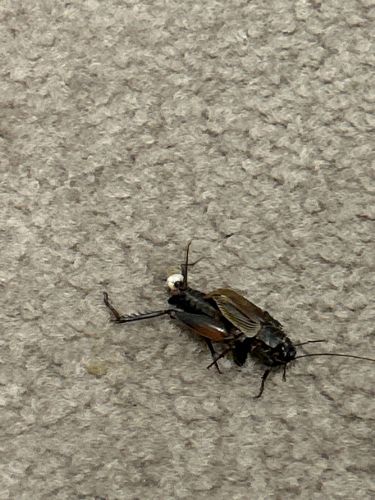Field Cricket
Scientific Name: Gryllus (various species, e.g., Gryllus pennsylvanicus, Gryllus assimilis)
Order & Family: Order: Orthoptera, Family: Gryllidae
Size: Typically 15-30 mm (0.6-1.2 inches) in length, excluding antennae.

Natural Habitat
Field crickets are commonly found outdoors in grasslands, fields, lawns, gardens, and under rocks, logs, or other debris. They prefer areas with good ground cover. They can also occasionally enter homes, basements, or garages, especially during colder weather or prolonged dry spells, seeking shelter, food, or moisture.
Diet & Feeding
Field crickets are omnivores, meaning they eat both plant and animal matter. Their diet can include plant parts (leaves, stems, seeds, fruits), fungi, decaying organic matter, and small insects (such as aphids or other crickets, sometimes even their own species). In homes, they may feed on fabric, paper, or pet food, though this is less common than outdoor feeding.
Behavior Patterns
Field crickets are nocturnal, meaning they are most active at night. Males are well-known for their chirping, which is produced by rubbing their wings together (stridulation). This sound is primarily used to attract females for mating and to ward off other males. They are generally solitary but can be found in groups, especially in areas with abundant food and shelter. During the day, they hide in burrows, cracks, under rocks, or in dense vegetation to avoid predators and heat. They undergo incomplete metamorphosis, meaning they hatch from eggs as nymphs, which resemble smaller versions of adults, and grow by molting.
Risks & Benefits
Potential risks of field crickets include being a nuisance, especially when they enter homes and chirp loudly, disturbing sleep. While not significant pests, large populations indoors can occasionally damage fabrics, paper goods, or house plants. They do not pose health risks to humans through bites or disease transmission. Benefits include their role as decomposers, breaking down organic matter, and serving as a food source for many animals, including birds, rodents, and other insects within the ecosystem.
Identified on: 8/31/2025